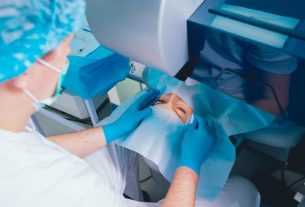Surgery to treat a herniated disc, dorsal, lumbar or cervical, is indicated in cases where there has been no improvement in symptoms of pain and discomfort, even with treatment based on medication and physiotherapy, or when there are signs of loss of strength or sensitivity. This is because this procedure poses some risks, such as limiting spinal movement or infection, for example.
The type of surgery may vary, and may involve traditional opening of the skin to reach the spine, or the use of more recent and less invasive techniques, with the aid of a microscope, for example. Recovery can vary depending on the injury and technique used and, therefore, rehabilitation physiotherapy helps to improve symptoms and return the patient to their daily activities more quickly.

Types of surgery
The type of surgery may vary according to the location of the hernia, the technique available at the hospital or according to the needs of each patient, determined by the orthopedist or neurosurgeon. The main types are:
1. Traditional surgery
It is done by opening the skin, with a cut, to reach the spine. The choice of the location to access the spine is made according to the closest location to reach the disc, which can be from the front, as is common in cervical hernia, from the side or from the back, as is common in lumbar hernia.
It is done with an access to the skin to reach the injured region. The choice of the spinal access site is made according to the injury and experience of the orthopedic surgeon.
This surgery is generally performed under general anesthesia, and part or complete removal of the intervertebral disc that is damaged may be removed. Then, a material may be used to join the 2 vertebrae together or an artificial material may be used to replace the removed disc. Surgery time varies depending on the location and situation of each person’s hernia, but it lasts around 2 hours.
2. Minimally invasive surgery
Minimally invasive surgery uses new techniques that allow a smaller opening of the skin, which provides less movement of the structures around the spine, a faster surgery time and a lower risk of complications, such as bleeding and infection.
The main techniques used are:
- Microsurgery: manipulation of the intervertebral disc is done with the help of a surgical microscope, requiring a smaller opening of the skin.
- Endoscopic surgery: is a technique performed by inserting small accesses into the skin, thus allowing a procedure with faster recovery and less postoperative pain.
Minimally invasive surgery can be performed with local anesthesia and sedation, lasting about 1 hour or less. During surgery, a radiofrequency or laser device can be used to remove the herniated part of the disc and, therefore, this type of surgery is also known as laser surgery.
Risks of surgery
Herniated disc surgery can present some complications, but the risk is very small, mainly due to the increasingly modern techniques and devices that are being used. The main complications that may arise are:
- Persistence of back pain;
- Infection;
- Bleeding;
- Injury to nerves around the spine;
- Difficulty moving the spine.
Due to these risks, surgery is reserved for those people with unbearable symptoms, or when there has been no improvement with other forms of treatment for a herniated disc. Find out what the treatment and physiotherapy options are for lumbar disc herniation and cervical disc herniation.
What is recovery like?
The post-operative period varies according to the surgery, with the length of stay being around 2 days in minimally invasive surgery and can reach 5 days in conventional surgery.
The possibility of carrying out activities such as driving or returning to work is also faster with minimally invasive surgery. In traditional surgery, to return to work, a longer period of rest is required. More intense activities, such as physical exercise, are only allowed after evaluation by the surgeon and improvement of symptoms.
During the recovery period, analgesic or anti-inflammatory medications, prescribed by the doctor, should be used to relieve pain. Rehabilitation physiotherapy should also be started, with techniques to help recover movement and maintain good posture. See what care you should take after spine surgery to speed up post-operative recovery.
Watch the following video and learn other tips that can help with recovery:

Sign up for our newsletter and stay up to date with exclusive news
that can transform your routine!
Warning: Undefined array key "title" in /home/storelat/public_html/wp-content/plugins/link-whisper-premium/templates/frontend/related-posts.php on line 12
Warning: Undefined array key "title_tag" in /home/storelat/public_html/wp-content/plugins/link-whisper-premium/templates/frontend/related-posts.php on line 13




